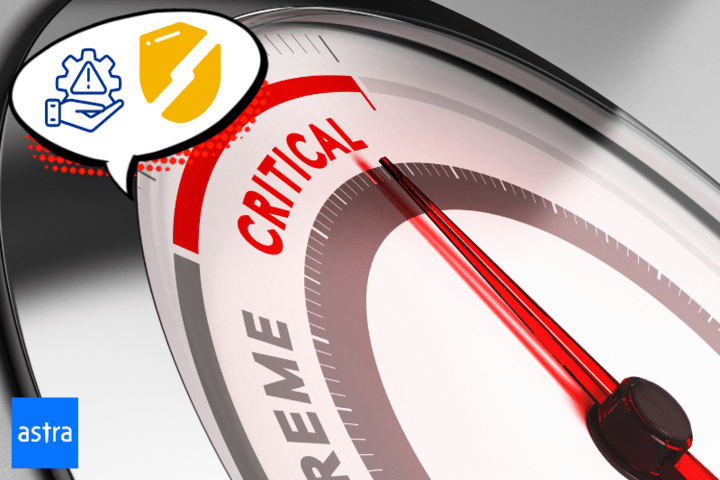Vulnerability management providers are an essential part of VAPT and vulnerability scanning services to efficiently manage vulnerabilities from their detection to their remediation with ease.
The top 7 vulnerability management providers include:
CVE details show that nearly 11% of all vulnerabilities are critical in nature with a CVSS score of 9-10. The vast majority, 77 percent, stands within a CVSS score range of 4-8.
Here are some of the factors to keep in mind when choosing a good managed vulnerability scanning services:
- Comprehensive Vulnerability Scanning
- Regular Penetration Testing
- DevOps To DevSecOps
- Cost and time effective
- Efficient Vulnerability Management
- Detailed Report
Top 7 Vulnerability Management Providers
1. Astra Pentest
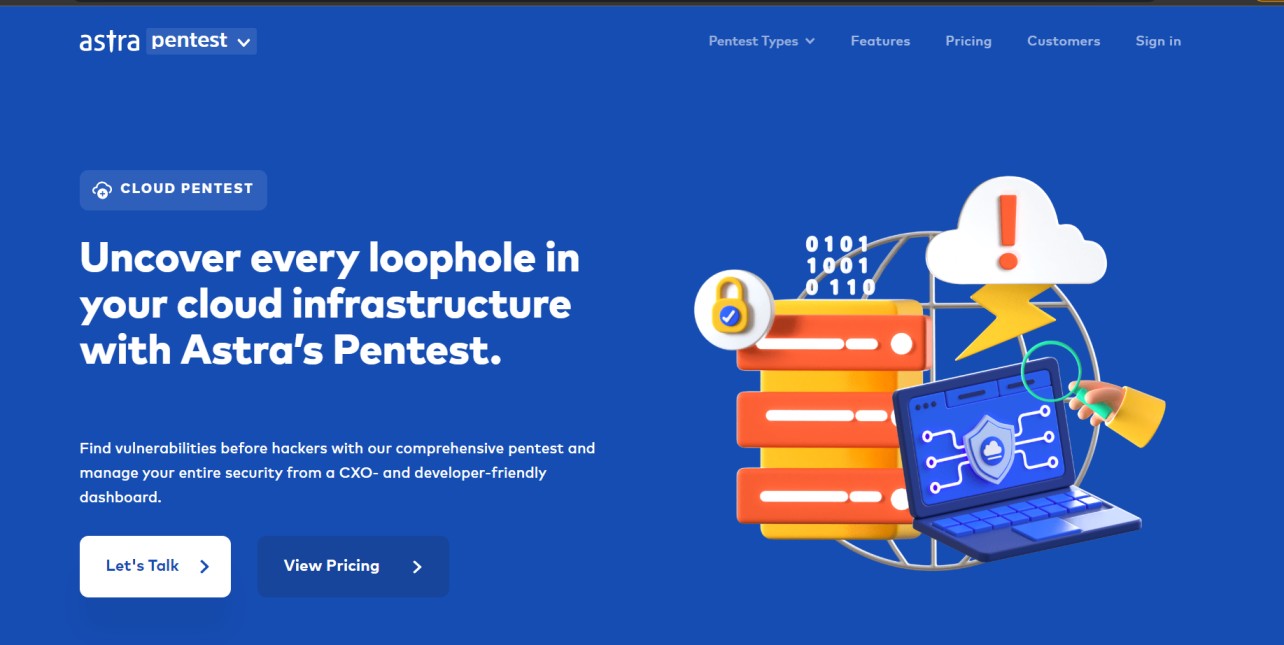
Astra Pentest, one of the best vulnerability management providers, provides a world-class comprehensive vulnerability scanner with the following features for effective vulnerability management:
- Comprehensive vulnerability scanner
Astra Pentest provides continuous scanning facilities with its comprehensive scanner that is capable of conducting more then 8000 tests to find any and every hidden vulnerability.
Astra offers web application security services that provide deep scans for web applications, APIs, networks, mobile applications, and cloud infrastructure.
- CI/CD Integrations
Astra offers CI/CD integration services for organizations. This helps companies move from DevOps To DevSecOps, thus giving more priority to security within every phase of a project’s development. It offers integrations with Slack, GitHub, and GitLab to name a few.
- Compliance-specific Scans
Astra offers the option to scan for specific compliances required by your organization. It provides a compliance-specific dashboard where you can opt for the specific compliance to scan for.
Once the scan is complete the results reveal the areas of non-compliance. Compliance-specific scans provided by Astra include PCI-DSS, HIPAA, SOC2, ISO 27001, and GDPR.
- Intuitive Dashboard (CXO friendly)
Astra’s vulnerability scanner boasts a CXO-friendly dashboard that is super easy to navigate. It displays the vulnerabilities as and when they are found.
Members of the development team can be added to the dashboard to collaborate with pentesters for quicker vulnerability resolution.
The dashboard also offers the option to comment under each vulnerability so that the development team can clear queries quickly.
- Detailed Reports
Once the vulnerability scanning is completed a report is generated which includes the scope of testing, a list of vulnerabilities found, their details, and possible remediation measures.
It also mentions its CVSS score and Astra goes a step further by providing customers with an actionable vulnerability risk score based on which critical vulnerabilities can be prioritized.
- Remediation Support
Once vulnerability scanning with Astra is complete Astra also provides detailed steps for remediation based on risk prioritization. This is done with the aid of POC videos and collaboration within the vulnerability dashboard.
Pros
- Can detect business logic errors and conduct scans behind logins.
- Provides rescanning upon successful remediation of vulnerabilities.
- Provides compliance-specific scans and reports.
- Ensure zero false positives through vetted scans.
Cons
- Could have more integrations.
2. Intruder
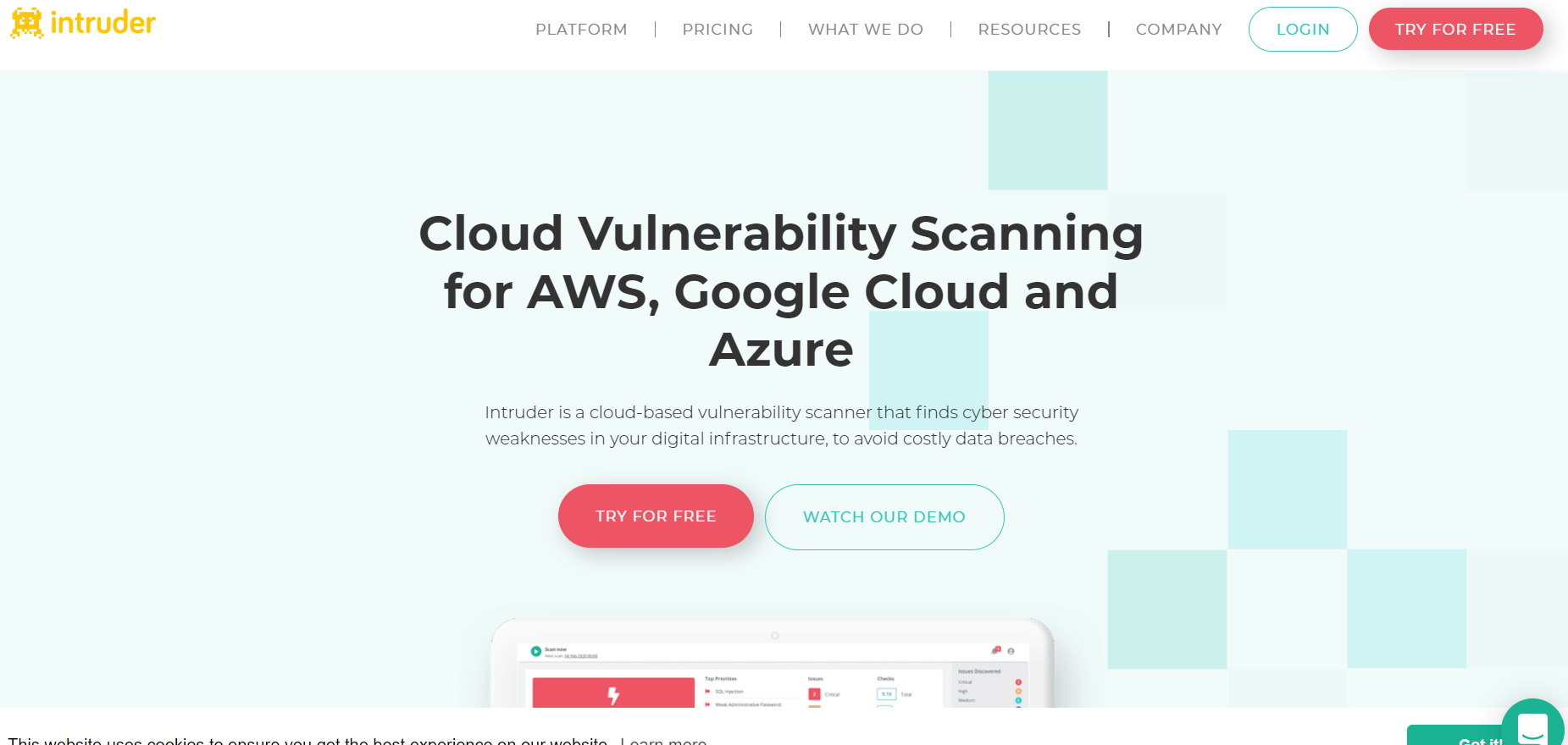
Intruder is a top-notch online vulnerability scanner that helps avoid costly data leaks and breaches through vulnerability scanning.
It offers continuous vulnerability management, compliance reporting, and monitoring as well as attack surface monitoring.
Pros
- Continuously monitors attack surfaces for any chinks in security.
- Provides comprehensive security checks to find vulnerabilities like misconfigurations, injections, OWASP Top 10, and more.
- Automated scanning with real-time alerts for exposed ports and other services.
Cons
- Could have better integrations.
- Confusing interface.
- Zero false positives are not assured.
3. Symantec

Symantec’s cloud workload protection provides automated security measures for your cloud providers and customers alike.
Symantec offers a client management suite that aims at deploying, managing, patching, and securing various assets on desktops and laptops.
Other services by Symantec include endpoint and identity security as well as information and network security.
Pros
- Provides end-point protection and threat detection.
- Also has centralized management.
- Has malware detection capabilities with the capacity for immediate remediation.
- Can be integrated within the CI/CD pipeline.
Cons
- A pricey cloud security solution.
- May not be feasible for small to medium-sized companies.
- Could provide better integration possibilities.
4. Qualys
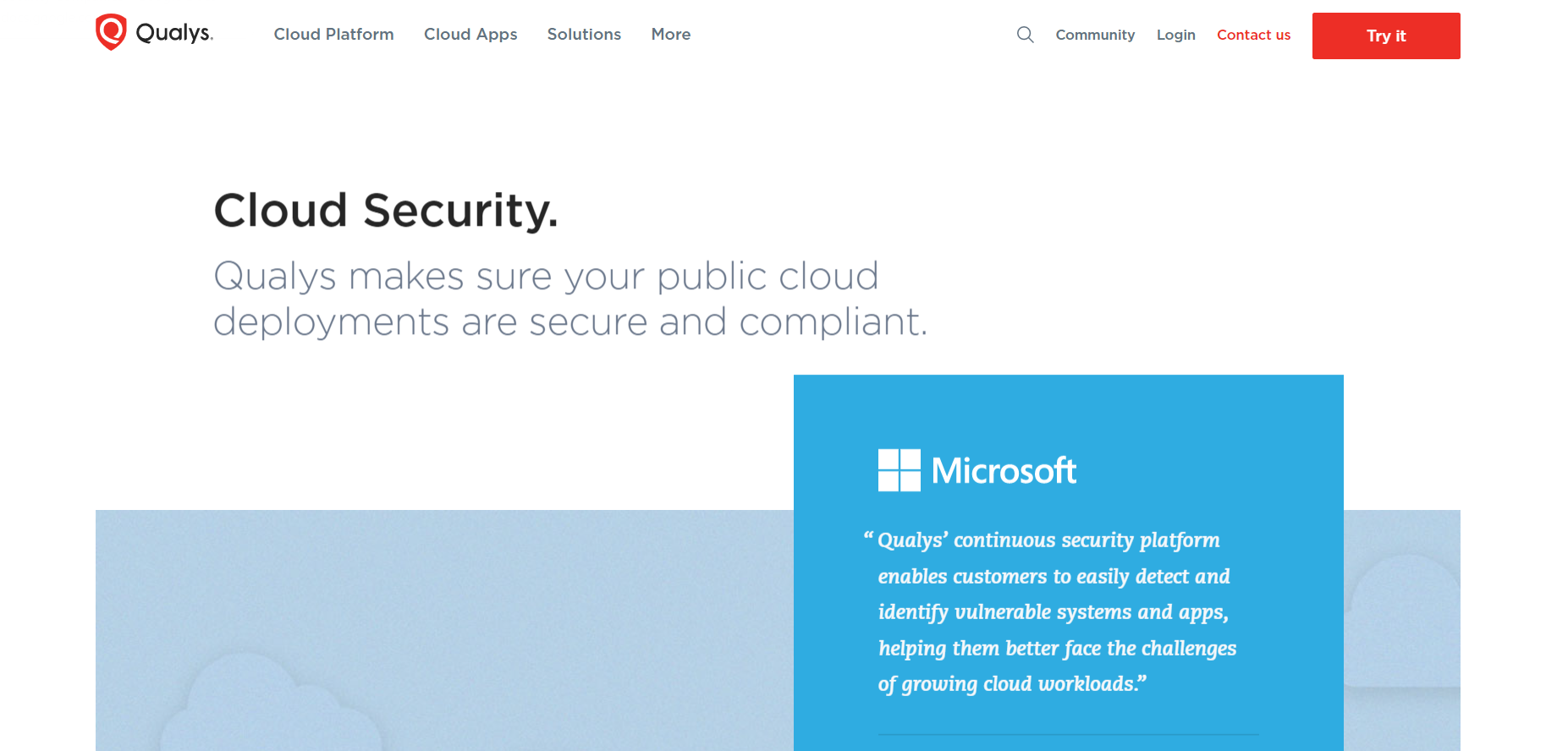
Qualys provides its cloud customers with continuous monitoring, vulnerability management, compliance solutions, and web application firewalls.
Besides its notable vulnerability management services, Qualys also offers network mapping and detection, vulnerability prioritization and remediation as well as cloud security.
Pros
- Timely alerts and responses.
- Well-designed and easy-to-navigate user interface.
- Constant updates ensure the current security measures for the cloud environment.
Cons
- Limited scheduling options.
- Scans are not applicable to all applications.
5. Rapid7
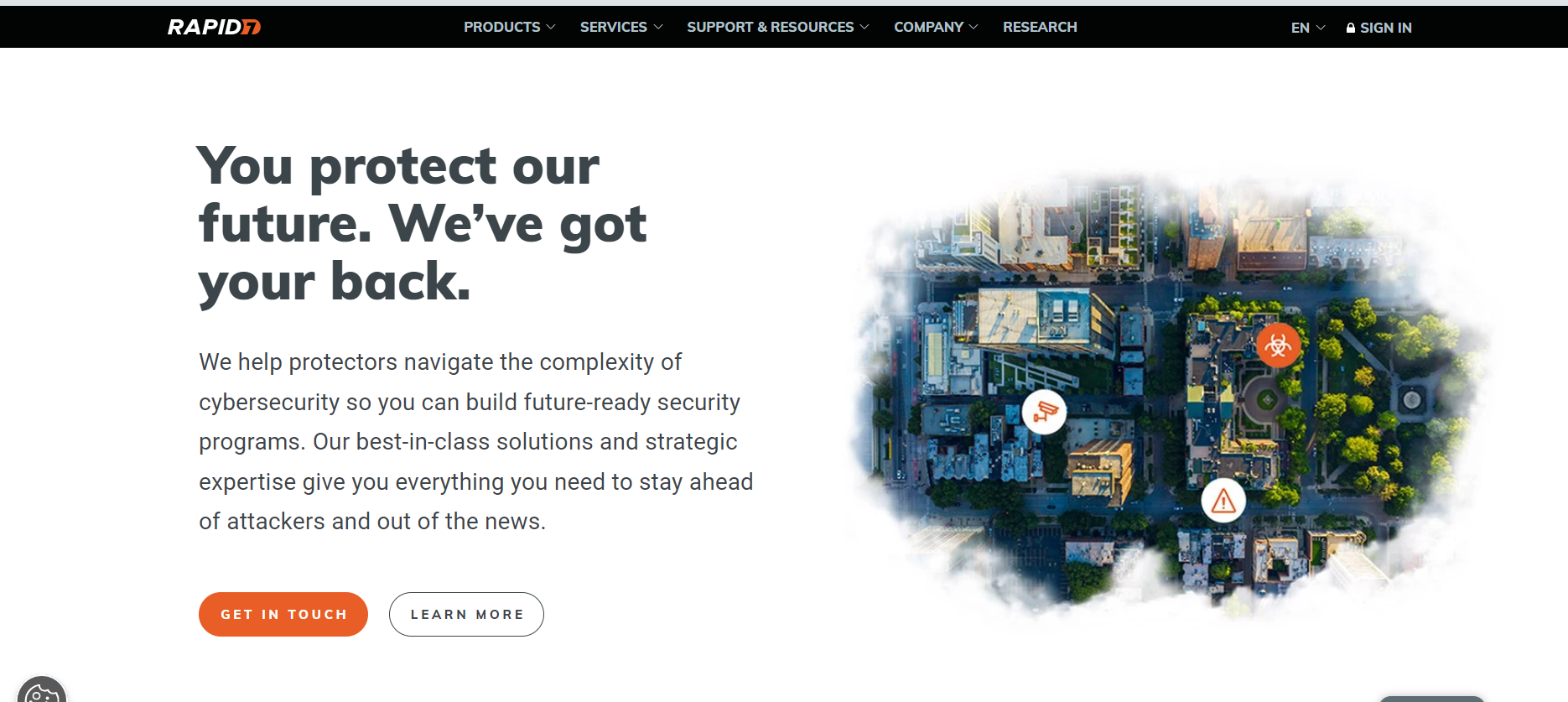
Rapid7 provides world-class application security, vulnerability management, and SIEM services.
Rapid7’s Insight VM offers capabilities such as advanced remediation, tracking, and reporting.
Other services provided by this company include penetration testing services and vulnerability scanning service.
Pros
- Simple and easy-to-navigate interface.
- Capable of finding hidden vulnerabilities
- Great and easy-to-understand reports.
Cons
- Customer support can be improved.
- Removal of scanned devices must be done manually.
Also Read- Qualys vs. Rapid7
6. AlertLogic
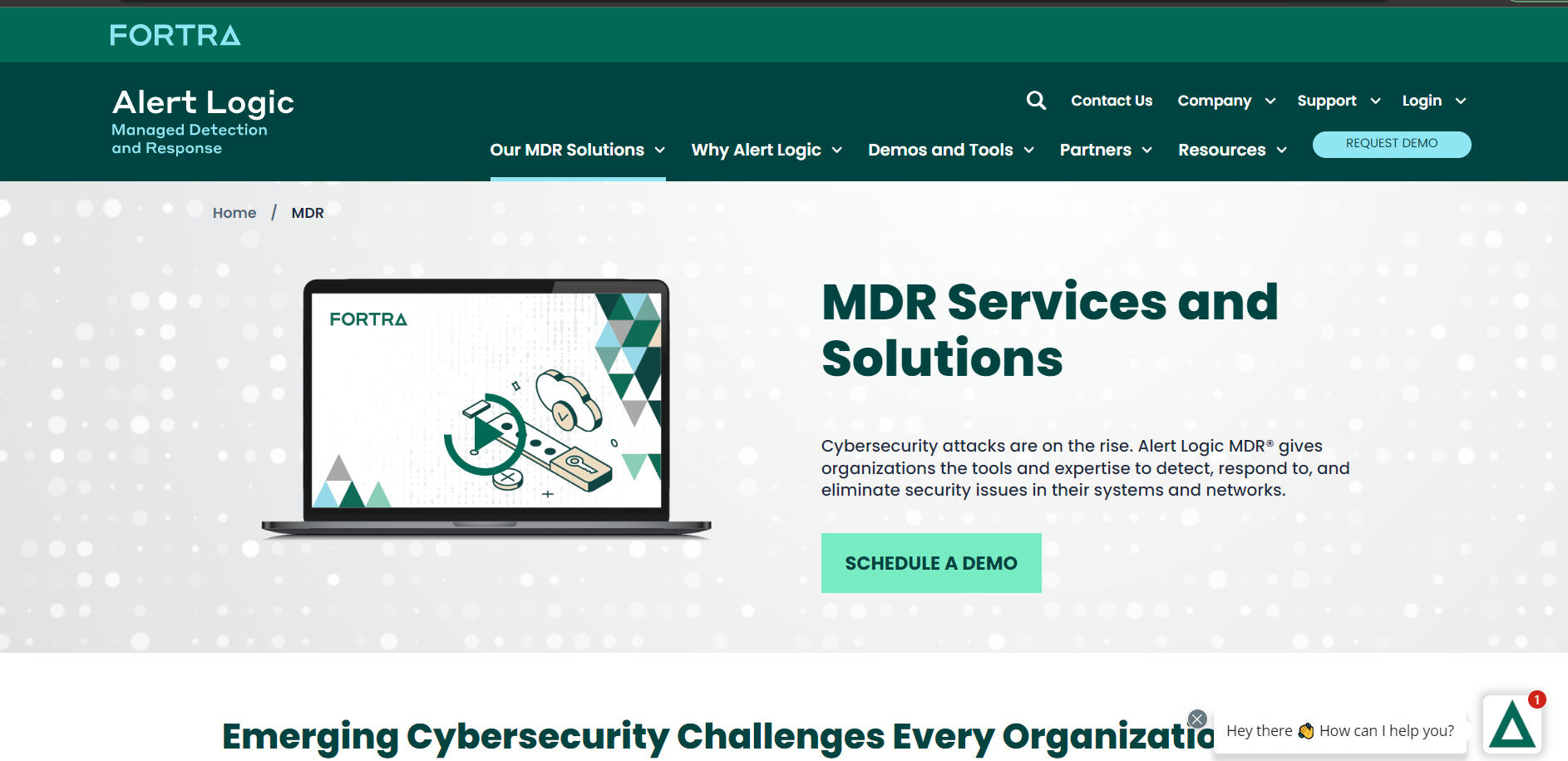
AlertLogic is a well-known SOC-as-a-service and vulnerability management provider that provides managed threat detection and response services (MDR).
Their holistic services include 24*7 threat monitoring, incident validation, remediation, log management, and more.
Pros
- User-friendly solution
- Precise and timely notifications
- Easy-to-navigate dashboards.
Cons
- Could have better end-point protection.
7. Tenable
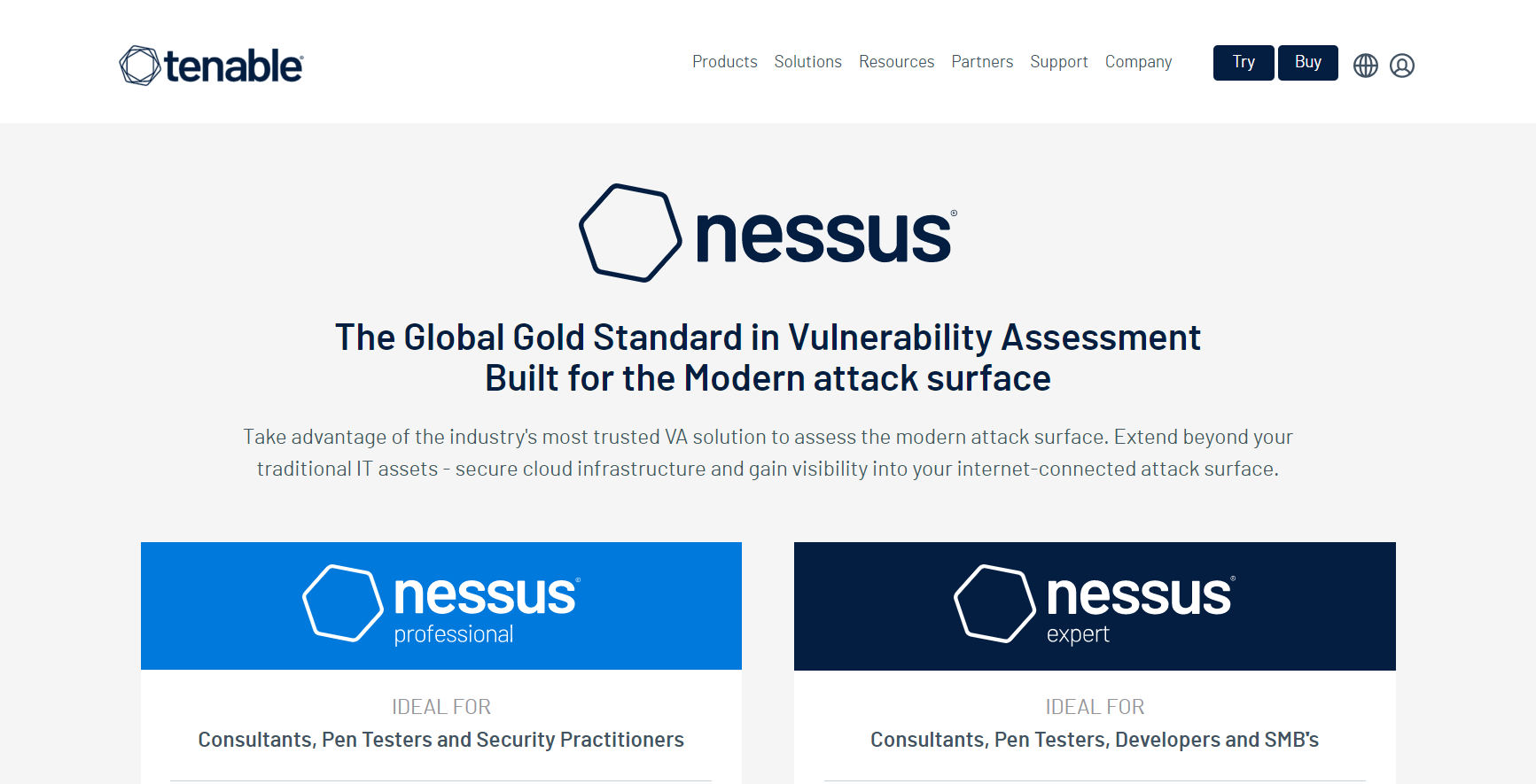
Nessus is a web application vulnerability scanning tool released by Tenable. It helps with point-in-time analysis of security systems to find vulnerabilities that may be plaguing them.
Tenable’s vulnerability management tool focuses on automated scanning to get a better view of cloud infrastructure and web applications to find vulnerabilities.
They also provide a detailed reporting feature that details the vulnerabilities found and the appropriate patches for them.
Pros
- Helps find missing patches that are critical to maintaining security.
- Point-in-time analysis of security system.
- Helps achieve compliance with the scans.
Cons
- Advanced support is only available upon additional payment.
- Takes time to complete scans.
- Can be an expensive solution.
Key Factors Of Vulnerability Management
1. Comprehensive Vulnerability Scanning
Make use of a comprehensive vulnerability scanner with good vulnerability management. Such a scanner should be able to continuously scan and detect even the most minute of vulnerabilities.
It should also have an extensive vulnerability database so that all vulnerabilities are rightly assessed. A good scanner should also be able to carry out behind-the-login scans, detect logic errors, weed out any false positives as well as ensure that are no false negatives.
2. Regular Penetration Testing
Conducting regular pentests is an excellent practice for the best vulnerability management. They go a step further from vulnerability scanning by exploiting the found vulnerabilities to properly assess the extent of damage that could occur from such an attack in real-life.
Regular pentests and scans are often considered mandatory during compliance audits since they help organizations identify and fix loopholes that need to be resolved.
3. DevOps To DevSecOps
Integrating vulnerability scanning into the development allows for continuous scanning for vulnerabilities throughout the progress of the application.
Such integration also allows for organizations to be continuously compliant with the important regulatory standards they need to abide by like GDPR, ISO 27001, HIPAA, and PCI-DSS.
4. Cost and time effective
Another benefit of employing vulnerability management providers is the costs it inherently saves. This is through the speedy management of vulnerabilities through quick detection and remediation. This reduces the chances of a cybersecurity issue due to continuous monitoring, testing, and efficient vulnerability management.
Using DevSecOps tools helps organization shift left and fully integrate CI/CD into their deployment cycle. This leads to accelerated development, deployment, and recovery as it speeds the entire process up through monitoring and continuous code integrations.
If a bug is detected by DevSecOps tools, then a rollback to the previous bug-free version can be initiated by it automatically so that appropriate fixes and testing can be done.
5. Vulnerability Management
Ensure that the tool has an effective vulnerability management system in place which not includes the identification of vulnerabilities but also its evaluation and reporting and remediation assistance in a timely manner.
Make sure that tool you opt for does not leave you high and dry once the vulnerabilities are found, leaving the brunt of the remediation to yourselves.
6. Detailed Report
Well-detailed reports have the scope of testing explained, vulnerabilities found on scanning, methods employed for exploitation of vulnerabilities, and the damages and information revealed from exploiting them as well.
Based on this, the report should also mention the CVSS scores for these vulnerabilities and well the detailed steps to take to patch them up. These reports are extremely useful for organizations when it comes to patching, or for documenting purposes for an audit.
Common Vulnerabilities And Risks Explained
Below are some of the common vulnerabilities and risks explained in detail:
1. Misconfigurations
These are one of the major vulnerabilities that lead to big data breaches in cloud platforms, web applications, and more. Misconfigurations refer to any glitches or gaps in the security measures adopted that can lead to leaving valuable information virtually unprotected.
These misconfigurations can generally include a lack of proper access management, and even security group misconfigurations. Not having proper access restrictions in place can lead to individuals gaining access to unauthorized sections of data and applications thus putting the entire system in danger.
Security group misconfigurations refer to the glitches or vulnerabilities in the security system in place for the cloud platform, by the service providers, such misconfigurations can lead to getting direct access to the cloud platform and result in heavy data theft and or loss.
2. Non-Compliance
Every sector and the companies that work within them have certain industry-specific standards and regulations that they strictly need to adhere to. This is called compliance. Certain important compliance standards include PCI-DSS, HIPAA, ISO 27001, SOC 2, and more.
Fines and penalties are imposed on organizations that do not adhere to regulatory standards set in place for security. Not ensuring whether customers are compliant with GDPR, HIPAA, and others or whether service providers have relevant certifications for security like ISO and or SOC2 can result in non-compliance of a high magnitude.
3. Weak Access Management
This is one of the most common risks to data security posed in the cloud. Improper or weak access restrictions mean that unauthorized personnel can access data that they aren’t authorized to do.
In some cases, data of customer applications and clients are stored with a third party. Here, it is critical to ensure that single-point access to the cloud infrastructure will not result in confidential data exposure. This could occur through unauthorized access resulting in data deletion or leakage.
Establishing proper access controls means that only authorized individuals can access certain data, documents, and applications. The process of vetting out the individuals who should be allowed access and who shouldn’t is known as authorization.
Not having role-based access management, disabling access to inactive users or former employees, and having multiple sign-in accounts can all lead to a safety risk in terms of proper access management.
4. Vulnerable APIs
APIs help streamline the data present for both it and the applications within it. Insecure APIs pose a threat by opening channels of communication that can lead to them getting exploited.
Insufficient authentication and authorization measures to restrict access to APIs are seen to be one of the most common causes that make APIs an extremely vulnerable region prone to getting attacked.
This leaves the APIs open to the reach of anyone on the web who can then use them to gain access to sensitive information.
5. Data Loss
The security of one’s data stored in servers is one of the crucial aspects of data security in the cloud. However, it is seen that data security breaches and subsequent data theft are also unignorable aspects of storing sensitive data on the cloud.
Such data theft can also lead to accessing employee account credentials and using them for malicious purposes. It also brings into question the efficacy of the existing security solutions thus causing a dissent when it comes to trusting the SaaS provider with sensitive client information.
Some of the reasons why data loss takes place are data deletion, lack of access, and data altering. Data deletion and alteration can lead to major chunks of important data being lost or changed which can severely impact an organization’s operations.
Conclusion
This article has detailed the top vulnerability management providers like Astra Pentest and others for you to consider for efficient vulnerability management. It has also listed a set of factors to look for when considering various vulnerability management providers.
Astra Pentest is one such vulnerability management provider that can meet all your needs and requirements. It employs the best features of a good vulnerability management system thus ensuring the safety of your services, the applications, and the data within.
FAQs
What are the 4 types of vulnerabilities seen in cybersecurity?
The 4 types of vulnerabilities commonly seen in cybersecurity are:
1. Human Error Vulnerabilities
2. Network Vulnerabilities
3. Procedural Vulnerabilities
4. Operating System Vulnerabilities
How do you mitigate vulnerabilities in the cloud?
Vulnerabilities within the cloud can be mitigated by practicing the best cloud vulnerability management practices like employing continuous comprehensive scanning and pentesting, and through the integration of VAPT in the CI/CD pipelines.
What can vulnerability scanners not do?
A vulnerability scanner provides an in-depth view of the impact of a vulnerability if it is exploited. Another issue with vulnerability scans is that it raises false positives which can result in companies spending time and money to fix vulnerabilities that didn’t exist.
